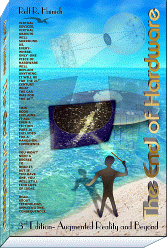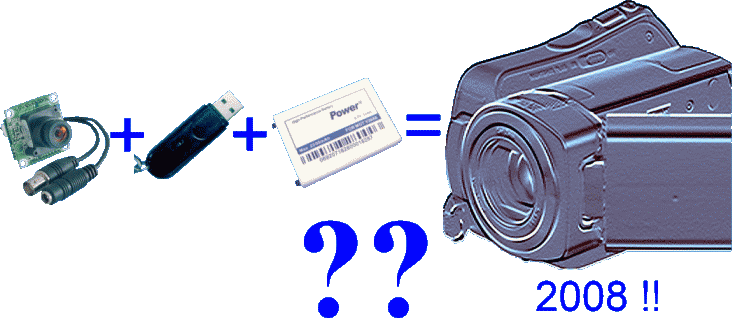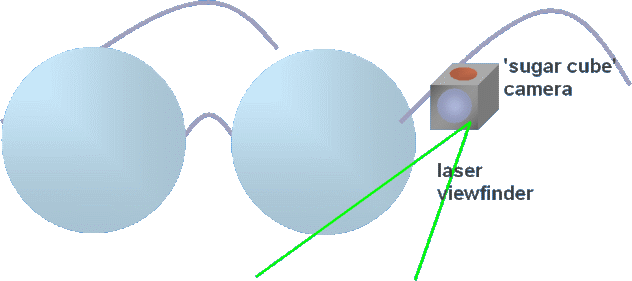Augmented Reality is more than Virtual Reality
Bionic cameras
Cameras today aren't only thick as a brick, they're stupid, too. Our eyes, in contrast, are very smart designs. Their optics aren't totally corrected, as it is quite simple to deal with geometrical corrections and even with chromatic aberration to some degree, by software. So a smart camera should follow bionic principles.
Superb plastic lenses can be manufactured today by simple molding. Full correction may be difficult, because large refraction indices are not available, but aspherical surfaces at least are easy. Finally correcting the image by signal processing is just as easy. Not only this: low resolution pictures can be upscaled to a higher resolution, to a certain degree, exploiting raster shifts between subsequent images. Small acceleration and perpendicularity sensors could deliver data for image stabilizing and easier MPEG encoding. These corrections wouldn't have to be made in the camera, as motion data could be integrated into an MPEG stream without compatibility issues, and later on a home computer could perform stabilizing and upscaling in one pass.
What we're talking about here is nothing less than a HD camera as small as a sugar cube, weighing but a few grams, recording several hours of video into its own solid state memory, and all this powered by its own internal accumulator. Such a camera you could just clip to your glasses' handle and about forget, as the only notice you'll take of it, would be when you press the record button.
Within the display glasses context, we've already mentioned a viewfinder just consisting of a light frame mirrored into the glasses, as the viewing perspective of camera and eye are almost identical. Without display glasses, there is still another way: include laser pointers into the camera, marking the corners of the image area right on the object recorded, simply with light. Placed a little outsides the actual recording window, these markers could not appear in the picture.
After recording, you'd simply plug the camera into your computer screen, use it as a webcam, let it load its battery and let the computer render the previously recorded video, in the background.
Combining two cameras for stereoscopy would be just as easy, if we simply equip them with some wireless connection, that could also ensure a microsecond accurate synchronicity for a seamless, extended stereo sound.
And where would we leave this pretty large 10x zoom of our classical camcorder? Forget it. If these cameras have one problem, it's their insufficient wide angle range. A powerful wide angle, without the necessity of being optically perfect because of our smarter approach, with a moderate zoom range if desired, would be a much better solution for most practical purposes, especially with HD, where wide angle is the natural choice because of the larger screen size.
Wouldn't such a little camera come in handy? no matter if stand alone or integrated into a mobile, it would be utterly versatile. It would use the same smart principles like our eye and brain, simple sensors and smart processing.
An approach far more capable than optical perfectionism. Simply natural.
home more notes order
Copyright © 2006-2011 Rolf R. Hainich; all materials on this website are copyrighted.
Disclaimer: All proprietary names and product names mentioned are trademarks or registered trademarks of their respective owners. We do not imply that any of the technologies or ideas described or mentioned herein are free of patent or other rights of ourselves or others. We do also not take any responsibility or guarantee for the correctness or legal status of any information in this book or this website or any documents or links mentioned herein and do not encourage or recommend any use of it. You may use the information presented herein at your own risk and responsibility only. To the best of our knowledge and belief no trademark or copyright infringement exists in these materials. In the fiction part of the book, the sketches, and anything printed in special typefaces, names, companies, cities, and countries are used fictitiously for the purpose of illustrating examples, and any resemblance to actual persons, living or dead, organizations, business establishments, events, or locales is entirely coincidental. If you have any questions or objections, please contact us immediately. "We" in all above terms comprises the publisher as well as the author. If you intend to use any of the ideas mentioned in the book or this website, please do your own research and patent research and contact the author.


